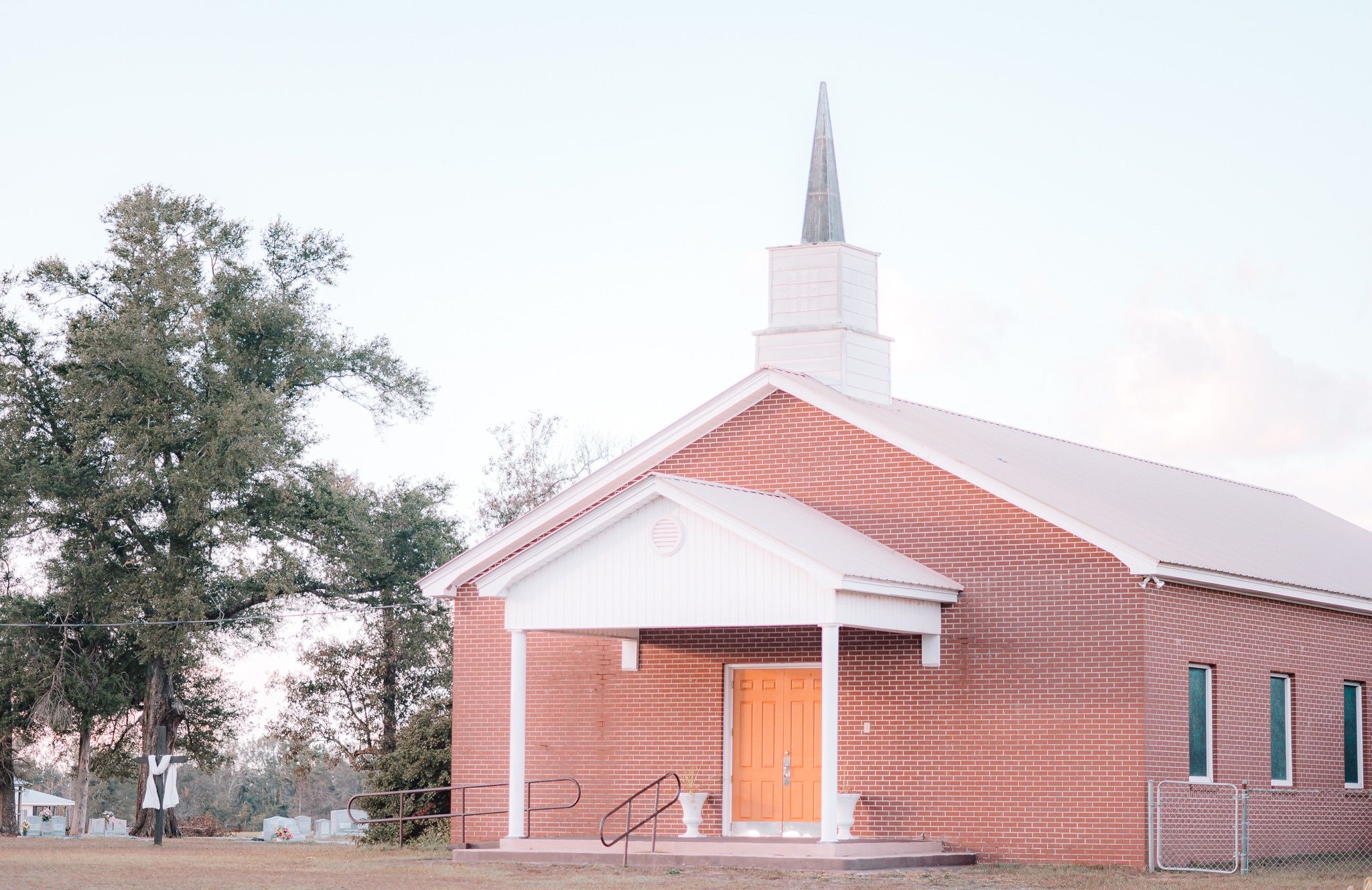The Emergence of Revitalizing Ministry
The Emergence of Revitalizing Ministry
Small Church vs. Mega Church
In a largely populated area only 5 miles across stands two churches. Church A sits just outside the city. Started in 1936, the church is worn and tattered, and has seen many pastors, leaders, and members come throughout the years. The church can hold up to 75, and there are stories of the past where the church could barely hold all of the people.
Some great heroes of the faith have gone through that church, and have been pillars in the community for years. If you were to ask anyone in the city, they have likely driven past the church a time or two.
But throughout the years, attendance has declined. The worship style was outdated, and the church did not grow with the community. However, out of a concern with attendance, the church began a revitalizing work using outside help. They have struggled to maintain attendance, but their church has had a different mindset on church health. Worship, fellowship, biblical preaching, prayer, and missions are current highlights of the church, and they are doing all they can to be faithful to the Lord. While they struggle in seeing numerical growth , the church is in a much better place spiritually, and they’re dedicated to continuing the effort.
Church B was planted 5 years ago in the city. A small group of people started meeting in the living room, and began casting a vision for a new church. It created some enthusiasm in the community and at their first launch date they had over 50 people. The past couple of years have shown a tremendous increase in growth, and their church is gaining national recognition. The speaker is popular, the worship band is modern, and the church began a discipleship program a few years ago that emphasizes small groups that meet outside of the church. Last year, they celebrated 40 baptisms and stood amazed at over 300 people on the first Sunday morning service of the new year.
One day, a member of Church A and a member of Church B were talking in a coffee shop. After asking why they chose to go to one church over another, one commented on a larger church preference because he wanted his kids to be very involved and enjoy fellowship with other kids their age. The other said that he enjoyed a smaller, traditional worship setting where the pastor knew him by name. So, he chose that church instead.
As we think about these two very different churches, you may likely think of some in your own community that are similar. Let’s ask a few probing questions based on these two churches.
Which church would be better to attend?
Which church seems to have a better future?
Which church would make you more spiritually healthy?
Correcting Old Methodology
If you’ve answered either one of the churches for the previous questions, your theology may be based off of your church methodology, and not vice versa. The truth is, depending on your family situation, your preferences, and your desires for ministry and spiritual growth, it could be equally advantageous to join either church. We may never know which church would have a better future. We also do not know which church would be a better setting for spiritual health.
Depending on your upbringing, you may have different biases about small churches, or large churches. But it’s time we face the music and deal with our old methodology, and possibly reassess how we think of the “church size” language.
As a millennial, I have grown up in the “church growth movement.” Even at 28 years old, I have been able to recognize both the advantages and the pitfalls of having a large, growing church. Growing up in a small church, my heart leans towards serving in a church of similar size.
 Our younger generation has been heavily influenced by technology. Every time I open up a social media app, I normally run across a sermon clip of a mega church speaker with skinny jeans and Nike Air Force ones, giving some catchy slogans about a scripture in the Bible. The catchphrases are not always bad, and are sometimes very powerful. But growing up observing that environment made me think that this type of ministry was the pinnacle of leadership.
Our younger generation has been heavily influenced by technology. Every time I open up a social media app, I normally run across a sermon clip of a mega church speaker with skinny jeans and Nike Air Force ones, giving some catchy slogans about a scripture in the Bible. The catchphrases are not always bad, and are sometimes very powerful. But growing up observing that environment made me think that this type of ministry was the pinnacle of leadership.
I mean, if your church is large and growing, that must mean you’re doing something right? , But after reading about church health, I started getting in the “cage stage” of small church preference. I used to make statements like, “Real discipleship can only happen in a smaller setting.” Or, “Having a pastor that knows your name is not just practical, it’s biblical.” But are these statements true in and of themselves?
For the past two years, I’ve been attending (what I call) a large church. We have between 500-600 in worship attendance. No, we aren’t perfect. But my mind has really shifted. My pastor knows my name. In fact, we are very close. We have active Connect Groups where we introduce new members to the church and plug them in to small settings. I have a small Discipleship group of 6 people that I meet with once a week for a year. We are active in mission and ministry. Maybe I was wrong about large churches!
I get magazines and publications at my office all the time. One came in that said, “The Top 100 Churches in America,” and proceeded to list them all out by size, giving tidbits of information about each one. There were numerous articles about church growth, marketing strategies, and GQ model photographs of these pastors. After looking through the magazine, I promptly asked my secretary if she could unsubscribe from the magazine. Do mega churches have good advice to offer? Yes, sometimes…
But my issue is when we treat large churches as the end-all, be-all of a perfect church. Growth does not always correlate to health. A church can be growing numerically but be stagnant in spiritual vitality. It’s time to correct our old methodology of rubric churches and get back to biblical basis. The correct question we should be asking is: “How can we lead our church to be healthy?” rather than, “How do we make our church grow?”
The Emergence of Revitalizing Ministry
In the past few decades, there has been an emergence of revitalizing ministry, and rightfully so. In Ep. 173 of the podcast, Mark Clifton and Mark Hallock noted some notable changes. When I was in college, we didn’t have any classes on church revitalization, church growth, or church health. We had preaching classes, theology, worldview, missions, and a few other helpful subjects. Looking back, I wish I would have taken something additional, something more practical, in helping revitalize churches. What I wish I knew back then was that 80 to 90% of our churches have less than 200 people, and that most of the men I went to seminary with, will likely be serving in small churches, not mega churches.
Some of the best resources you can find on this topic are from Karl Vaters. He’s written much for small churches, including one familiar book called, The Grasshopper Myth. In this book, he helps us understand the danger of comparison, using the example of the spies who return back from Canaan and refer to themselves as “grasshoppers.”
More recently, Vaters published a book called, Small Church Essentials, in which he makes the following statement:
The typical church in North America is small. Half of this continent’s approximately 320,000 Protestant churches run about 80 in weekly attendance. In addition, George writes that at the 100 mark in attendance, a church has become larger than 60 percent of its peer churches – at 140, 75 percent and at 200, 85 percent. So why are we teaching ministry students big-church skills, almost exclusively, when most of those skills may never apply to the majority of their ministry? Instead we pump small churches up with big-church principles and expectations, most of which apply in only a small percentage of the churches in existence. Then we wonder why so many pastors leave ministry burned out and disillusioned, with damaged churches in their wake.”
When I started working at the association I knew I needed to understand revitalization better, due to ministering to some of the dying churches in our community. I was overwhelmed with how many resources have been put out in the past 15 years or so. This is to help address the very real issue that we see in churches all across America today. Hundreds of churches close their doors every year and we weren’t doing anything about it for a long time.
But in my generation, I’ve seen that there has been a shift in methodology. There has been an emergence of resources, speakers, and initiatives that have helped encourage young pastors to go to the church revitalization route of ministry. I’m incredibly thankful for this, because I now understand church health much better than before.
What’s Biblical?
It is not wrong to have a large church. It is not wrong to have a growing church. The problem is when we use big churches as an example for how every church ought to be. I always thought that it was impractical to see magazines about worship technology come to our small rural church in south Georgia. Our worship consisted of a bass and a piano, and occasionally an organ. The people in my church service sang with something real in their hearts, the same as I’ve heard at a large conference with a worship band.
On the flipside, it is not wrong to have a small church. Our communities are all different, and our people have different worship preferences. In the New Testament, believers did not have the privilege of choosing out of 20 churches to go to in their small towns. They normally had one church in those early days. So that’s where they gathered.
If we try to form our methodology based on some New Testament church growth strategies, I’m afraid we will come up empty-handed. However, what we do see in the New Testament is that Jesus cares deeply about the health of his local church, no matter the size. Paul would come along and encourage those churches, giving them encouragement and instruction about how their church ought to be modeled, as one that would be honoring the Lord in all things. Paul and Apollos even acknowledge that while they planted and watered, God was the one that gave the growth.
What we see in the New Testament is an emphasis on prayer, evangelism, missions, heartfelt worship, fellowship, and other characteristics of a healthy church. Sometimes, God gives growth as a result of our healthy efforts. Other times, there could be some practical things that hinder a churches’ growth, such as their location in the community. Are we to blame God, thinking that his favor should coincide with our church’s numerical growth? I think not.
I’m thankful that we now live in a day where more young pastors are being encouraged to do the hard work of revitalizing churches, when this has not always been the case. There are now seminary classes, cohorts, training, available, and other resources to help address the need that there are dying churches in all of our communities. What are we doing about this?
As encouraging as this emergence is, we truly need more. We need more pastors being called to small churches, we need to emphasize the importance of following God’s call faithfully, instead of encouraging the “greener grass syndrome.” Am I going to be used by God? I will if I pursue a holy life, and seek his will in all things. However, God’s favor is not always measured by our church growth, and we should remember that.
On topic of Church Growth critiques, see Evaluating the Church Growth Movement, Five Views. If you’re interested in taking some classes in Church Revitalization, my alma mater, SEBTS, has an excellent M.A. program. As always, please reach out to the Replant Team for any questions on these matters, we’re always here to encourage and help in any way we can.















